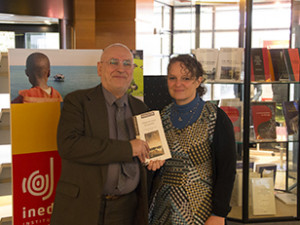Nathalie Le Bouteillec and Jean-Marc Rohrbasser
answer our questions on Naissance des sciences de la population [Birth of population science].
(Interview from February 2018)
What texts are presented in this book?

The book presents thirty scientific texts published in the Transactions of the Royal Swedish Academy of Sciences, and translated into French for the first time here; twelve of the texts are by the Swedish astronomer Pehr Wargentin. The translations are introduced by three texts that retrace the political, scientific and economic history of Sweden in the Age of Liberty and highlight these scholars’ methodological choices and the advances in demographic science represented by their texts.
In what context was the Swedish Royal Academy of Sciences founded and why?
The Swedish Royal Academy of Sciences was founded in 1739, during a period known as the Age of Liberty, a period when the sciences were at the service of the economy. Accordingly, the first mission of the Academy of Sciences was to develop the economy by bringing together and promoting scientific knowledge in the fields of mathematics, natural sciences, economics, trade and manufacturing. The fact that Academy members included entrepreneurs and engineers demonstrates how central to economic development their role was understood to be: the Academy to envisioned as a sanctuary of practical and social utility. This purpose is also attested by the choice of themes and the selection of texts published in the Academy’s Transactions. In the first edition of them, Carl von Linné published a text entitled “Thoughts about the Foundation of the Economy,” focused on the mission of the sciences in society. In it he demonstrates that detailed and extensive knowledge of nature are needed to further develop industry and agriculture.
Sweden was a pioneer in demography and statistics. In what way?
The reader of this book will likely be surprised to discover not only the relevance and rigour of the texts presented here but also the remarkable advances in the field of population sciences. All the texts—and particularly those by Wargentin—discuss questions that either had not been addressed earlier or had not been effectively treated. We find thinking on the seasonality of births, deaths and marriages; an exact calculation of the speed at which a population will double; a theoretical premonition that a pyramid constitutes a relevant representation of age distribution in a population; thinking on the relationship between settlement and territory; and an attempt in 1780 to measure migration movements—to our knowledge, the first of its kind. These important theoretical propositions are part and parcel of this thorough set of texts, a veritable treatise on population, which, while understandably focused on the situation in Sweden, nonetheless uses comparisons on several occasions to formulate generalizations and explain obtained results. Furthermore, these authors consistently discuss data collection and relevance with a rigour and precaution that today’s statisticians would not be ill advised to adopt.
